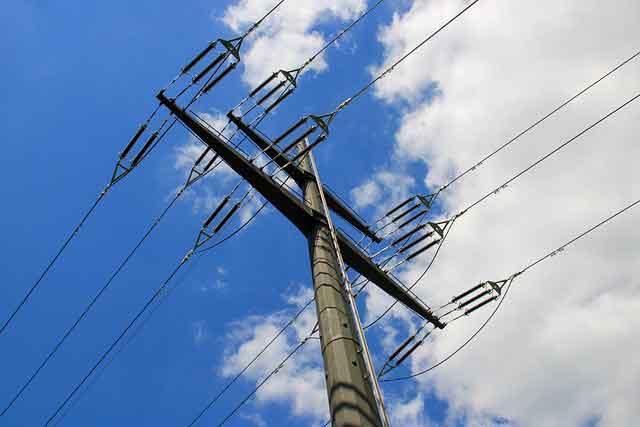Minnesota's historically low prices are fading: Area firms feeling the burn of electric costs
MINNESOTA - In the past year, Tom Henry has watched St. Cloud Civic Center's utility costs take a double-digit jump. That hike will force the city-owned building to increase its rental rates.
"We haven't raised our rates for about three years," said Henry, manager of the building. "But with utilities alone, we'll have to raise them."
He estimates rental costs will increase by about 9 percent, but the St. Cloud City Council will have final approval.
In 1999, the Civic Center paid $103,443 for electricity. From 1999 to 2004 that amount increased by about $2,000 to $105,416. But from 2004 to 2005, the cost jumped 12 percent to $118,310.
The Civic Center is not alone.
Central Minnesota business and building owners are seeing high electrical costs cut deeper into budgets already squeezed by costly health benefits packages and ballooning fuel prices.
Electricity costs are one of the few utilities the state has some power over, and so the Minnesota Chamber of Commerce has made the issue a top legislative priority.
Mike Franklin, a chamber energy lobbyist, said businesses, ranging from manufacturing to retail, have seen electric costs surge since Jan. 1. Some increases have been in the double digits.
In one instance, a commercial real estate company in St. Paul saw a 20 percent cost increase between January 2005 and January 2006.
"When you are talking increases for a property like that, it's in the $6,000 to $8,000 range more per month," he said.
"A fraction of a penny (per kilowatt hour) can literally mean millions of dollars a month," Franklin said.
Jennifer Mrozek, chief financial officer for Marco Business Products Inc. of St. Cloud, said its energy costs have increased about 20 percent in the past year. But the company doesn't have any plans to reduce energy.
"We see it as a necessary evil," she said. "We haven't adjusted the way we do business. We don't have a lot of influence over it."
Instead, she said, the company focuses more on selling office products, to try to keep profits on target.
"I'd certainly say it's probably impacted our business," she said.
There are many reasons for the increasing cost of electricity. Increased fuel costs, higher market electricity costs and more demand from customers are among them. At the same time, the biggest utility company in the state, Xcel Energy Inc., has increased its base rate for customers.
The two biggest products used in energy production are natural gas and coal. Natural gas costs have almost tripled since 1997 and coal prices in some areas have doubled and in others tripled during the past three years, according to the U.S. Department of Energy.
Scott Wilensky, executive director for state government affairs with Xcel Energy, said his company buys electricity from other utility companies when prices are better than Xcel's. But lately, he said, these companies are facing the same fuel cost issues and are raising prices.
The demand for energy also is up, he said. His company relies on cheaper energy production such as nuclear power to provide a base for the state. However, as demand increases, the company needs to up the use of natural gas plants, which are more expensive to run.
The company is looking into building more plants to meet future needs, but Wilensky said building more plants also will increase costs for customers.
At the same time, Xcel Energy is seeking to increase base prices for electricity.
The company has asked the state to approve an 8.05 percent base rate increase. If the Minnesota Public Utilities Commission approves the hike this fall, it would be the first base rate increase in 13 years.
In the interim, the company has implemented a 6.9 percent increase to cover company plans to invest in plants and infrastructure, Wilensky said.
The company will refund the difference between the actual rate hike and the interim rate hike if the state does not approve the 8.02 percent rate hike.
Minnesota historically has had low electricity costs, ranking consistently among the top 15 states for lowest industrial electricity costs, according to the Department of Energy.
"Historically, we've been a very competitive state," Franklin said.
A Minnesota company that built an East Coast plant found cheaper labor, insurance and land, but double the electricity costs, he said.
Electricity costs may be one of the reasons companies expand and locate in Minnesota.
"Our biggest fear is that we lose that advantage," Franklin said, and businesses need every advantage in a global economy.
Electricity is one of the financial benefits the state offers to businesses, but that has been changing. Last year, the state dropped to No. 26 for industrial energy costs.
Commercial energy prices have increased both on a state and a nationwide basis.
Minnesota's cents-per-kilowatt-hour rate increased from 6.05 to 7.12 between February 2005 and February 2006.
The average nationwide increased by a lesser amount, 0.89 cents per kilowatt hour. However, the national average in February was at 9.09.
Franklin said one way the chamber has lobbied to keep prices low is by working to stop environmental mandates from raising prices.
The chamber has lobbied against reforms such as the 2020 bill, which would have required electric companies to use 20 percent renewable energy by the year 2020. The chamber supports renewable energy, but not mandates that cause large price jumps, Franklin said.
"We'd like to add to renewables without causing significant increases for customers," he said.
Heightened electricity costs are cutting into some businesses' bottom lines.
Brian Simowitz's monthly utility bills at his Ground Round Restaurant shot up 20 to 25 percent in the past year. In extreme cases, monthly bills that would have been $4,000 two years ago are now $6,000, he said.
"Obviously, you either have to raise your prices, or cut back somewhere else," said Simowitz, owner of the St. Cloud restaurant.
Simowitz did both. He raised food prices 1 to 2 percent and tightened hours for employees, sending people home when work gets slow.
"It does affect the work force," he said.
The restaurant also made efforts to conserve energy by turning on ovens incrementally through the day, depending on how busy things are.
In the end, though, he says the costs cut into revenues. Simowitz said it's an added hurdle in the restaurant business, which already has a difficult survival rate.
"It's affected us quite a bit," he said.
To save on energy costs, Henry said the Civic Center likely will replace the building's rooftop heating and air-conditioning units within the next few years. The units are 18 years old, and though they work, the building will save money by getting more efficient units, which require less maintenance.
Last year, the center replaced its marquee, which uses light bulbs that are brighter and 80 percent more energy efficient.
Henry expects a payback on energy savings within five years.
The Civic Center has taken other steps to conserve energy. There are systems in place to save on electricity and heating costs. During the summer, the center keeps temperatures in unused rooms about 78 degrees.
"We do everything we can to keep our usage down," he said.
Related News

Doug Ford's New Stance on Wind Power in Ontario
ONTARIO - Ontario’s energy landscape is undergoing a significant transformation as Premier Doug Ford makes a notable shift in his approach to wind power. This change represents a strategic pivot in the province’s energy policy, potentially altering the future of Ontario’s power generation, environmental goals, and economic prospects.
The Backdrop: Ford’s Initial Stance on Wind Power
When Doug Ford first assumed the role of Premier in 2018, his administration was marked by a strong stance against renewable energy projects, including wind power. Ford’s government inherited a legacy of ambitious renewable energy commitments from the previous Liberal administration under Kathleen Wynne,…




